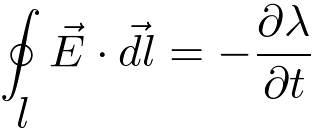Figure 1
Figure 2
Figure 3
|
Figure 1
|
In this lab, we investigate the generation of a voltage by a time varying magnetic field. Faraday's law states that the voltage generated in a loop is equal to the time derivative of the magnetic flux passing through the loop.

(1)
| where the magnetic flux, | |
Equipment
FIVE | [Reflect] |
Reflect upon your observations.Q: Is the ratio of the secondary voltage to the primary voltage the same as the turns ratio, as predicted by ideal transformer theory? What might cause it to differ?